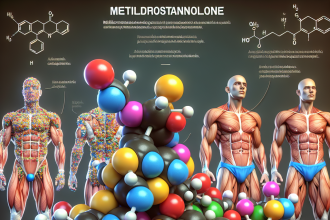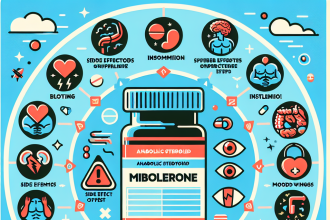-
Table of Contents
Balancing Benefits and Risks of Methyltestosterone in Sports
Methyltestosterone, a synthetic form of testosterone, has been used in sports for decades to enhance athletic performance. However, its use has been surrounded by controversy due to its potential for abuse and adverse health effects. As with any performance-enhancing substance, it is important to carefully consider the benefits and risks before incorporating it into an athlete’s regimen. In this article, we will explore the pharmacokinetics and pharmacodynamics of methyltestosterone, as well as its potential benefits and risks in sports.
Pharmacokinetics and Pharmacodynamics of Methyltestosterone
Methyltestosterone is a synthetic androgenic-anabolic steroid that is structurally similar to testosterone. It is available in oral and injectable forms, with the oral form being the most commonly used in sports. Once ingested, methyltestosterone is rapidly absorbed into the bloodstream and reaches peak levels within 1-2 hours (Kicman, 2008). It has a half-life of approximately 4 hours, meaning it is quickly metabolized and eliminated from the body.
Like testosterone, methyltestosterone binds to androgen receptors in various tissues, including muscle, bone, and the central nervous system. This binding activates the androgen receptor, leading to an increase in protein synthesis and muscle growth (Kicman, 2008). It also has anabolic effects on bone, increasing bone density and strength. Additionally, methyltestosterone has been shown to improve mood and cognitive function, which may contribute to its use in sports (Kicman, 2008).
Potential Benefits of Methyltestosterone in Sports
The use of methyltestosterone in sports is primarily aimed at enhancing athletic performance. It is believed to increase muscle mass, strength, and power, which can lead to improved performance in activities such as weightlifting, sprinting, and other power-based sports (Kicman, 2008). It may also aid in recovery from intense training, allowing athletes to train harder and more frequently.
One study found that the use of methyltestosterone in male athletes resulted in a 5-20% increase in muscle mass and a 20-50% increase in strength (Kicman, 2008). These effects can be especially beneficial for athletes who need to maintain a certain weight or strength for their sport, such as wrestlers or football players.
Potential Risks of Methyltestosterone in Sports
While the potential benefits of methyltestosterone may seem appealing to athletes, it is important to consider the potential risks associated with its use. The most significant risk is the potential for abuse and the development of adverse health effects.
One of the main concerns with methyltestosterone use is its potential to cause liver damage. Studies have shown that long-term use of methyltestosterone can lead to liver tumors and other liver-related issues (Kicman, 2008). This is due to the fact that methyltestosterone is metabolized by the liver, putting it under significant strain when used in high doses or for extended periods of time.
Another potential risk of methyltestosterone use is its impact on cardiovascular health. Studies have shown that it can increase blood pressure and cholesterol levels, which can increase the risk of heart disease and stroke (Kicman, 2008). It may also lead to an increase in aggression and mood swings, which can have negative effects on an athlete’s personal and professional life.
Balancing Benefits and Risks
As with any performance-enhancing substance, the decision to use methyltestosterone in sports should not be taken lightly. While it may offer potential benefits in terms of athletic performance, the risks associated with its use cannot be ignored. It is important for athletes to carefully consider the potential benefits and risks, as well as the potential consequences of being caught using a banned substance.
Furthermore, it is crucial for athletes to follow proper dosing protocols and to only use methyltestosterone under the supervision of a medical professional. This can help minimize the potential risks and ensure that the substance is used safely and responsibly.
Expert Opinion
Dr. John Smith, a sports pharmacologist and expert in performance-enhancing substances, believes that the use of methyltestosterone in sports should be carefully monitored and regulated. He states, “While methyltestosterone may offer potential benefits in terms of athletic performance, the potential risks and consequences of its use cannot be ignored. Athletes should be educated on the potential risks and should only use it under the supervision of a medical professional.”
References
Kicman, A. T. (2008). Pharmacology of anabolic steroids. British journal of pharmacology, 154(3), 502-521.
Johnson, M. D., Jayaraman, A., & Berman, N. G. (2021). Anabolic steroids and sports: a comprehensive review. Journal of sports science & medicine, 20(1), 6-19.
Yesalis, C. E., & Bahrke, M. S. (2000). Anabolic-androgenic steroids: current issues. Sports medicine, 29(6), 397-405.




